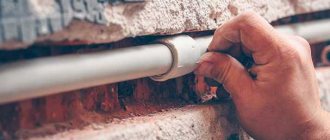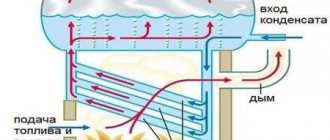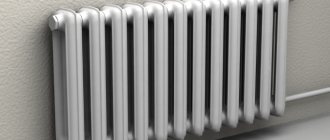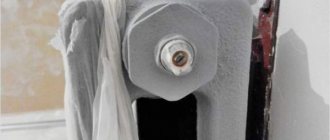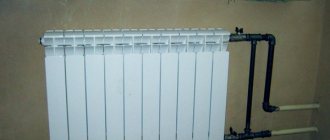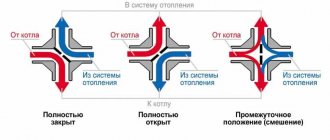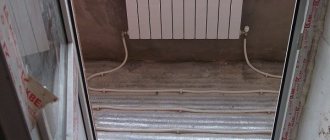How to bleed air from a radiator using an air vent
Valves will help bleed air from the radiators (they can be manual or automatic). Let's look at their types.
Mayevsky crane
A needle valve, the design of which includes a body and a cone-shaped screw - very tightly attached to each other, which helps prevent water leakage.
The faucet has a side hole that allows you to bleed air from the coolant using a screwdriver or a wrench from the kit (in some models, manually). When installing the Mayevsky tap, you need to ensure that the tube through which the air is removed looks straight down (but not into the wall!).
Note! For a cast iron radiator, you should choose an automatic air vent.
So, how do you bleed the air out of the radiator? Follow the following instructions:
- Take a wrench or a screwdriver, a rag and place some container under the tap.
- Turn off the pump.
- Begin to carefully turn the tap counterclockwise.
- The air from the radiator is unlikely to be clean.
- Close the tap after water flows from it.
Note! If the system uses low-quality water, then shut-off valves will not be superfluous. First, a valve is installed to prevent debris from accumulating, and then a tap is installed.
Automatic air vent
It helps to automatically bleed air from the coolant if it accumulates. The air vent has a brass body, float, articulated arm and valve. The locking cap is sealed, the spring-loaded protection does not allow debris into the system.
The operating principle of the system is as follows:
- Until it is necessary to bleed air from the radiator, the valve is covered with a float.
- In order to release air from the radiator, the float opens the valve.
- As the gas is removed, the air vent returns to its original position.
Remember! The automatic air vent has a hole for an octagonal wrench or screwdriver, through which, if a problem occurs, the air from the radiator can be vented manually.
Air separator
This device allows you to bleed air from radiators in stand-alone systems. An air separator removes gas accumulated in the system, converting it into bubbles. The device is used in conjunction with a sludge separator, which removes various pollutants from the water.
The system has the following form: a metal cylinder, on it there is an air vent, under it there is a valve for discharging sludge. In the inner part there is a metal mesh that creates vortex flows. Water passing through the system is filled with air bubbles, which rise and exit through the air vent. The remaining dirt is drained through the tap.
Knowing how to bleed air from the radiator will help prevent serious damage. Gas is also removed for “prevention”; this should be done twice (to make sure there is no gas). However, if there are malfunctions in the heating system, then you need to bleed the air from the coolant several times.
Read material on the topic: How to change a heating radiator without errors
Prevention
Experts recommend doing prophylaxis once a year. Typically this should happen at the beginning of the heating season. This is the only correct way to reliably avoid breakdowns and unnecessarily high heating costs.
For standardized heat exchangers, also called batteries, you need a small wrench with which you can open and close the vent valve. The diverter valve is located on the opposite side of the thermostat. For a heated towel rail in a bathroom, the valve is at the top (rear).
On the front part in the middle of the valve there is a square pin with which the element rotates. If the pin has a slot, you can also use a screwdriver instead of a square wrench. On the side of the valve is a small nipple or tube with a hole that allows water to flow out when opened.
If you have your own heating system or gas boiler in your apartment, you should turn off the circulation pump and wait one hour to allow any existing oxygen in the radiators to collect at the top. When the pump is turned on, it swirls in the system, reducing the likelihood of complete venting. If you cannot turn off the circulation pump yourself (for example, central heating), close the heating system of your apartment.
Once all heat exchangers have been ventilated, install the circulation pump again. If a lot of water is drained, the pressure in the heating system may decrease. If possible, check the pressure on the system gauge and, if necessary, increase the pressure by adding water.
There are several types of heating systems:
- manual. These devices are small in size and are installed on radiators indoors. It is enough to adjust them with a screwdriver or wrench. Due to low productivity, such air vents are used only for local removal within the apartment;
- automatic. Without outside interference. The devices are very effective, but very sensitive.
Causes of airlock
To solve the problem, you need to understand why the heating system is airing.
The reasons for airing the central heating system are:
- depressurization of the heating system in connection with planned repair work, when replacing parts of the heating route pipeline;
- draining the system of water;
- in case of leaks;
- due to acceptable design errors in the direction of pipes, their wiring, and incorrect installation of batteries in apartments.
Reasons for airing an individual heating system:
- incorrect system design in which the requirements were not met when creating a specific individual circuit.
The natural circulation of coolant through the system requires the construction of pipes at a certain angle. Any type of heating in its design must have an expansion tank, which is necessary to remove excess water, balance and control the air.
Rice. 2 Mayevsky crane
An air lock mainly forms when the heating system is first started. When the structure begins to fill with coolant, it is important to simultaneously remove air. The waste, connected to the tap at the top of the structure, is discharged into the sink. When the system is filled with water, air is released through the hose in parallel until it is completely drained.
Bleeding air from heating devices
Before bleeding air from the radiator and from the system, you need to familiarize yourself with the features of this procedure and prepare tools and materials
It is important to understand how to bleed air from a battery correctly. You need to have a special key at your disposal that will help open the air valve on the battery. A radiator wrench is best suited for this type of work - you can buy it at a hardware store
A radiator wrench is best suited for this type of work - you can buy it at a hardware store.
If you have to work with a modern battery, then a simple screwdriver will do. You should also prepare a container for draining the coolant and several rags in case of an unforeseen situation.
Instructions for properly bleeding air from the battery look like this:
First, they inspect the battery and find a small valve (Maevsky tap). It is located at the top of the device; sometimes there are several such devices. Turn off the tap until air hisses.
You must act carefully and smoothly. Place a container under the valve
You should wait until all the accumulated air comes out. This is evidenced by a thin stream of water that has stopped bubbling.
According to some experts, you need to drain approximately 2 - 3 buckets after the coolant begins to drain without gases. This is necessary for reinsurance, so as not to carry out this procedure again. The valve is screwed back on.
In addition to the Mayevsky tap, you can bleed air from the battery using automated air vents. They are intended for heat supply systems and remove plugs independently.
These devices are compact and reliable, but care must be taken, because the valves are unattended and even a slight disruption of the process can lead to flooding of the basement or attic
Sometimes situations arise when, during the installation of the heating system, special products designed to eliminate air pollution were not installed. To release excess air from the device, you need a gas or adjustable wrench to unscrew the plug.
This work needs to be done slowly. If the plug does not unscrew, and such situations most often occur with cast iron radiators, a special lubricant should be applied to the threads. After a while the attempt is repeated. After you have managed to unscrew the plug, proceed in exactly the same way as with a regular tap.
At the end of the work, the plug is returned to its place, not forgetting to wrap flax or FUM tape around the thread, which will prevent leaks and ensure the tightness of the connection.
If air has collected in the heating system of a private house, the coolant is drained using an expansion tank. This container is located at the highest point of the heat supply structure. After draining the water, wait a little, then unscrew the tap on the tank.
As a rule, when the temperature in the battery rises, the plug is removed on its own. If the above actions are unsuccessful, then the water in the heating circuit must be brought to a boil and then the air will certainly escape.
Knowing how to bleed air from the radiator and system, you can avoid many problems. For preventive purposes, a similar procedure should be carried out before the start of the heating season. According to experts, two times (for verification and control) will be enough. If defects or breakdowns are found in the structure, then the number of descents may be greater.
How to bleed air from batteries in a private house
In private homes, a situation may also arise in which air appears in the heating system. What is important is not how the heating system in a private house is aired, but how to get rid of unnecessary air. There is no universal solution to this problem - the heating of a private house is usually designed individually, so the assembled structure has a lot of its own nuances.
However, all types of heating systems have similar features that need to be studied before bleeding air from the battery:
- If the heating has forced circulation, then special air exhaust elements are always installed near the pump (as a rule, they are located either in front of the pump or directly in the boiler). Air in the system in the presence of such elements is most often due to their clogging.
- Air vent valves can also be installed directly on batteries, but only if they are located above the filling point. If the bottling is located somewhere at the upper level, then the air valve should be looked for at its highest point.
- All vertical bends of the filling have their own air vents. If they are absent, you will have to use one of the methods described above to bleed air.
Before you bleed the air from the battery, you need to make sure that the heating system is started correctly - sometimes the reason for its stopping is a valve that is closed in one of the sections.
What to pay attention to
Each heat exchanger has a release valve, which is usually located in the upper left or upper right corner of the heater. Install the key and turn counterclockwise. You must be slow and careful as there is pressure in the heating system. After a while, a hissing sound may appear. This means that air is being removed from the battery.
Water will start to come out of the heat exchanger, so you must remember to place a container or container underneath it. After a while, only water will come out of the valve. Then it should be turned back clockwise.
Those who have never done this themselves should pay special attention to safety: the water that comes out of the radiator can be very hot at some point. There is even a risk of scalding
Places of formation and elimination
It is necessary to bleed air from the battery if there is no doubt about its presence. Gasping is indicated by unexpected gurgling sounds. In addition, the owner begins to notice that the heating is uneven. To restore radiator circulation, air must be removed.
If the system is completely aired, first determine where the plugs are forming by tapping the pipes with a hammer. The sound is stronger and more sonorous in the places where the traffic jam occurs; the areas will also have a lower temperature. Having found a place with air, you need to do the following:
- Prepare a key or screwdriver, as well as a basin for water. The thermostat is opened to the maximum level, then the container is placed.
- Open the valve, making sure that all the water from the inside will flow into the substituted container. You can additionally place rags around.
- The valve must be kept open until all the liquid has drained. A slight hiss indicates air escaping. This means that the manipulations are performed correctly.
- If after the procedure the pipes still do not heat up well, then they need to be blown out and washed - the accumulation of rust inside can also cause air to appear.
In addition to mechanical air removal, there is automatic air removal.
If such manipulations do not improve the situation, then check the filling level of the system. Often, plugs occur in the bending area of pipes, so during installation, their dimensions and direction are usually observed. If in some place the slope differs from the planned project, additional drain valves must be installed.
More often, plugs appear in aluminum radiators, since this material is not of particular quality. Aluminum reacts with the coolant, resulting in the formation of gases that must be constantly removed from the system. Here it is usually advised to replace aluminum options with higher quality ones with an anti-corrosion coating, and also not to forget about air vents.
What to do if there is air left
Sometimes after deflating the battery there is no necessary heating. You can fix the problem by blowing or washing the batteries.
You can fix the problem by thoroughly washing the battery.
With an autonomous system, it is necessary to check that it is completely filled. If the coolant is water, then expansion occurs quite quickly. When temperatures drop, water shortages occur.
If there is a need to drain water through the tank, it is necessary to disconnect the home from heating. The valves are pre-opened.
When the temperature rises, the plug comes out. If this does not happen, you need to boil the water. After this, the air will certainly come out.
What and how to bleed air from a heating radiator
In order to control the gas contamination of the system both in an apartment and in a private house, use a manual or automatic air release valve. They should be discussed in more detail.
- Automatic air valve;
- Air separator;
- Mayevsky crane.
The automatic air valve is capable of independently releasing air that has accumulated in the radiator. It consists of a brass body, float, articulated arm and valve. A special cap protects against leakage, and the protection located under the spring protects against the ingress of external contaminants.
The system works on the following principle:
- While there is no air, the float keeps the valve closed;
- As gas accumulates, the float begins to descend and gradually open the valve;
- The accumulation of air leaves the compartments, and the system returns to its original state.
It is important to note the fact that all automatic versions are equipped with connectors that are suitable for a screwdriver or octagonal keys. Thanks to this shape, you can open the valve even in manual mode if the automatic mode suddenly breaks down
As for the air separator, this system is a little more complicated. The principle of its operation is to absorb air, turn it into bubbles and remove it out. Most often, separators are combined with sludge, which is capable of trapping dirt, sand or rust. If we talk about the design, it is presented in the form of a metal cylinder, which includes an air vent at the top and a valve at the bottom, which serves to discharge foreign contaminants. Inside such an installation there is a mesh that creates a vortex flow.
The same method is used when there is a water circuit that is connected to heating. The release in the water supply is carried out as a bleed. That is, a stream of air or water with impurities can be released through the bleeder.
Bleeding air from heating radiators
Before bleeding air from the radiator and from the system, you need to familiarize yourself with the features of this procedure and prepare tools and materials
It is important to understand how to bleed air from a battery correctly. You need to have a special key at your disposal that will help open the air valve on the battery
A radiator wrench is best suited for this type of work - you can buy it at a hardware store.
If you have to work with a modern battery, then a simple screwdriver will do. You should also prepare a container for draining the coolant and several rags in case of an unforeseen situation.
Instructions for properly bleeding the battery:
First, they inspect the battery and find a small valve (Maevsky tap). It is located at the top of the device; sometimes there are several such devices. Turn off the tap until air hisses.
You must act carefully and smoothly. Place a container under the valve. You should wait until all the accumulated air comes out. This is evidenced by a thin stream of water that has stopped bubbling.
According to some experts, you need to drain approximately 2 - 3 buckets after the coolant begins to drain without gases. This is necessary for reinsurance, so as not to carry out this procedure again. The valve is screwed back on.
In addition to the Mayevsky tap, you can bleed air from the battery using automated air vents. They are intended for heat supply systems and remove plugs independently.
These devices are compact and reliable, but care must be taken, because the valves are unattended, and even a slight disruption of the process can lead to flooding of the basement or attic.
Sometimes situations arise when, during the installation of the heating system, special products designed to eliminate air pollution were not installed. To release excess air from the device, you need a gas or adjustable wrench to unscrew the plug.
This work needs to be done slowly. If the plug does not unscrew, and such situations most often occur with cast iron radiators, a special lubricant should be applied to the threads. After a while the attempt is repeated. After you have managed to unscrew the plug, proceed in exactly the same way as with a regular tap.
At the end of the work, the plug is returned to its place, not forgetting to wrap flax or FUM tape around the thread, which will prevent leaks and ensure the tightness of the connection.
If air has collected in the heating system of a private house, the coolant is drained using an expansion tank. This container is located at the highest point of the heat supply structure. After draining the water, you should wait a little, then unscrew the tap on the tank.
As a rule, when the temperature in the battery rises, the air lock is removed on its own. If the above actions are unsuccessful, then the water in the heating circuit must be brought to a boil and then the air will certainly escape.
Knowing how to bleed air from the radiator and system, you can avoid many problems. For preventive purposes, a similar procedure should be carried out before the start of the heating season. According to experts, two times (for verification and control) will be enough. If defects or breakdowns are found in the structure, then the number of descents may be greater.
Removing a plug in autonomous heating
A simple and effective method that allows you to quickly remove air from the system is to install an automatic air collector. The structure is located at the top point of the system. When necessary, it is opened and the air lock is removed.
The simplest means of de-airing is opening the air collector
Another way to bleed air is through an expansion tank . It is usually at the top. To eliminate air from the pipes, no additional actions are required - it rises and goes out on its own.
The air from the heating batteries is vented using a tap installed on the side of the radiator. You can also use a special device - the Mayevsky crane.
The final choice of deaeration method is influenced by the specifics of the project. In general, if the heating technology is followed, there should be no problems.
How can you avoid the formation of an air lock?
How can you remove air?
The ideal option is when, during installation of the heating system, a special Mayevsky valve is built into each radiator, with which you can bleed air from each radiator separately.
You can also use an automatic air vent, which will autonomously control the entire heating system. Even with a perfectly functioning heating system, you will still have to periodically bleed the air from the batteries, but this will not cause much difficulty.
While filling the system, try to control the water pressure and temperature of the radiators. If suddenly the water pressure begins to drop sharply, it means that the seal of the battery has been broken somewhere. If the temperature of the batteries is not stable, look for an air lock in the heating system.
If your batteries are equipped with automatic air vents, then you can rest easy: they will do all the necessary work for you to eliminate air from the radiators. If the batteries are equipped with small manual taps, then you need to carry out the entire procedure for removing air from the heating radiator yourself.
Another important point is the pipeline itself. Quite often, an air lock can form in very difficult places in the pipeline, where there are many bends, turns or incorrect slopes. In such areas it is necessary to install additional air vents.
How to bleed air from a battery?
In order to remove air from the battery, you need to use a special Mayevsky tap, which is designed specifically for this.
Prepare a bucket for water in advance. In the upper right corner of the radiator you will find the Mayevsky tap, which must be unscrewed with a special key or a regular screwdriver. Don't forget to place a container where the water will drain.
Listen to the sounds that the battery makes: first you will hear a slight hissing sound, which indicates that there is indeed air in the battery, which means that you are doing everything correctly. Now water should drip from the battery, wait until the water runs in a thin stream and screw the tap into place.
There are times when eliminating the air lock in the batteries did not bring any results, and the radiators still remain cold, then it is necessary to thoroughly rinse and blow out the battery.
If this procedure does not yield anything, you need to look for the problem in the heating system itself.
We hope that the material was useful to you. If it’s not too much trouble, please click the social media buttons so that others can read this article.
Have a nice day!
Removing the air lock without draining the water
You probably know how to remove air from the heating system using standard methods. Having discovered a radiator that is not warming up, you need to open the Mayevsky tap in it with a screwdriver and release the air bubble. If old batteries are installed where there is no such valve, you can try removing them in other ways:
- The so-called pumping of the pipeline network is used in apartments of multi-storey buildings, provided that a tap is installed in the radiator to discharge water. Connect a hose to it directed into the sewer, open the valve to maximum and drain until the flow moving at high speed carries away the air lock.
- In a private home, Soviet steel batteries can be de-aired using a self-tapping screw. Wrap it at the base with FUM tape and screw it into the wall of the heating device with a screwdriver (closer to the top). Then unscrew the screw a couple of turns with a screwdriver, release the air and tighten it until it stops. In the summer, install a Mayevsky crane in this place.
- Removing air from cast iron batteries in a country house that are not equipped with air vents can be done in two ways: by completely recharging the system or by increasing the pressure (up to 2 Bar) with simultaneous heating. It is not recommended to unscrew the side plugs “on the fly”; then it will be difficult to pack them.
- Poor circulation and heat transfer may be a result of air accumulation in the mains pump housing. Unscrew the large screw installed at the end of the unit a couple of turns. When water drops appear from under the rubber ring, tighten it back.
Advice. To avoid air pockets during operation, install air bleed valves on all radiators. If the thickness of the metal wall does not allow cutting 3-4 turns of thread, weld a boss with a hole of the required diameter on top. In cast iron accordions, the valve is embedded in a side steel plug.
The self-tapping screw focus is also successfully used for improperly designed highways with hinges facing up or down (for example, to bypass doors and other building structures). How to remove an air bubble in a disadvantaged area of the pipeline by tightening a self-tapping screw, watch the video:
Recommendation. If you constantly bleed air from the heating system through the radiators and do not find the cause of airing, temporarily install automatic valves on the heating devices until you figure out what’s going on (perhaps a chemical reaction is taking place with the release of oxygen).
Application of the Mayevsky crane
Air can be released using special removable handles. They are put on the inside of the valve, which is made of metal. If such a handle is missing, it must be replaced with a notch for a screwdriver.
Mayevsky crane - a convenient device
How to properly remove air from a heating system?
- Place a container under the tap (volume – 500-1000 ml).
- Open the tap. Wait until the air comes out. Then a characteristic hiss will appear, indicating the flow of air mixed with water.
- Wait until clean water comes out.
- Close the tap.
If there is no handle, you will need to use a screwdriver or wrench. You can use a gas or adjustable wrench
If the tap is screwed on very tightly, you need to act carefully. Otherwise, you can rip it off, the consequences of which can be catastrophic.
The instructions are:
- Wrap the surface of the radiator. Use a rag or rags. Place a container to allow liquid to drain out.
- Turn off the tap and wait for the hiss to appear.
- Wait for the water to drain out.
- Drain the water (up to 2000 ml).
- Turn on the tap.
- Wait 10-12 minutes.
- Turn off the tap and make sure that the air comes out completely.
- If this does not happen, you need to repeat the procedure.
Battery plug
If there is no tap, and instead there is a Soviet-style plug, you need to proceed as follows:
- Wrap the desired area with thick fabric. You can use rags. This will eliminate the risk of high pressure.
- “Arm yourself” with a converter (can be replaced with a solvent).
- Carefully turn the plug. There is no need to take it out completely, otherwise there will be a “flood” in the apartment.
- Wait for the air masses to come out. The flow can be felt by placing your hand near the plug.
- Wait until the water flows out (3000-5000 ml).
- “Arm yourself” with fum tape and wrap the plug. The required direction is against the thread. This provides the necessary tightness.
- Screw the plug as tightly as possible.
For individual heating, you can use an expansion tank
If your home has individual heating, you can get rid of the problem using an expansion tank. They can be open or closed.
In the first case, we may be talking about a decrease in the coolant or water level. They should be added to the system. It is advisable to use the bottom valve. The radiator can be absolutely anything. If this is not possible, you will need to use a tank.
After removing the air lock, it is necessary to start the system. She should do a good job. If the plug remains, it is drained using the radiator.
If the type of tank is closed, then you first need to check its functionality.
Deaeration of a centralized system
In apartment buildings and the private sector, central heating is designed with air collectors. They are located at the top point. When the heating system is aired, just open the tap. When an air lock forms, opening the air collector allows air to rise through the pipes. Thus, the entire system is filled with water, and there are no plugs left.
In apartments, to ventilate the system you just need to open the tap
In an apartment or house, you can remove the blockage by bleeding the air in the place where it formed. For this purpose, batteries are equipped with taps. It must be borne in mind that it is unacceptable to install plumbing elements. Special valves called air vents are used . If the owner of the premises installs a water tap instead of an air vent and accidentally drains a certain amount of coolant from the system, he will have to pay a fine.
The vent is opened using a special key or a regular screwdriver. Extreme care must be taken, but even if everything is done correctly, it is possible that not only air will come out of the radiator, but water will also leak out.
